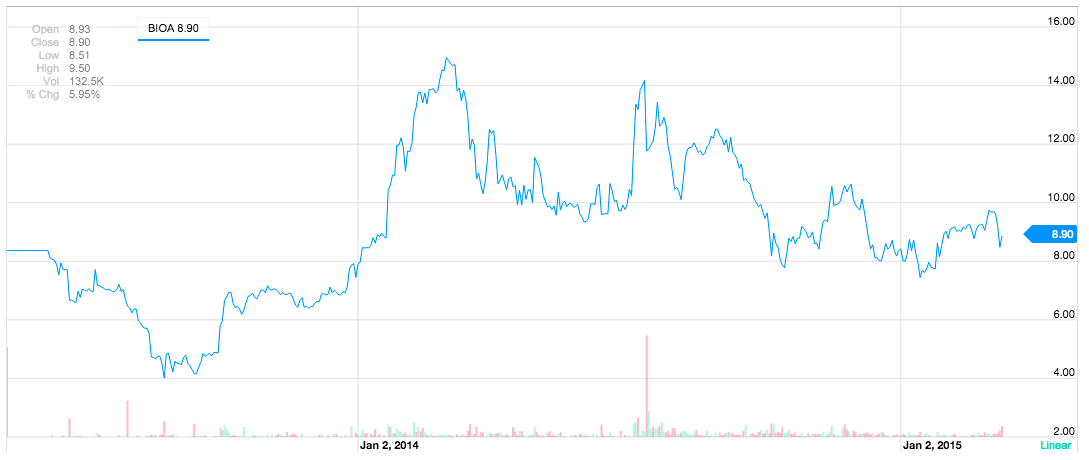It is 2am in the morning and when I can’t sleep, that means it is time to blog. BioAmber released its 4Q and Full Year 2014 financial results yesterday reporting construction progress and on budget for its 30 ktpa bio-succinic acid plant in Sarnia, Ontario, Canada, with a goal to be in commercial operation by third quarter this year.
Early this month, the company updated that it has initiated commissioning activities for the plant, which is expected to take five months. The cost of the project is on track within the original budget estimate of $125 million +/- 10%. During the commissioning phase, the facility is reportedly being ran section by section, producing bio-succinic acid and qualify it with customers while beginning to sell product that meets specifications.
BioAmber said it added 5 new customers in Q4 2014 to a total 21 new customers last year. The signed take-or-pay agreements with Vinmar and PTTMCC Biochem already represents 50% of the capacity’s annual sales projected each in 2016 and 2017. Sales volume for 2015 for the two contracts are expected at over 5,000 tons. New uses for BioAmber’s bio-succinic acid were reportedly validated in the lubricants and paints/coatings markets, and as flavoring performance in food applications (disodium succinate). As previously reported, 100% of BioAmber’s manufacturing capacity in Sarnia is already under contract.
BioAmber also ended its toll manufacturing contract with ARD in Pomacle, France, last year, and therefore the company has to manage sales to preserve its inventory levels before the Sarnia plant start-up. It seems there has been a decrease in the average sales price for the company’s bio-succinic acid last year as customers reportedly seek pricing in line with the contracted prices for future Sarnia supply. I guess it does not help that with crude oil prices down, petro-based succinic acid could become more competitive.
The company reported an annual gross loss of $24,000 in 2014 due to lower selling prices combined with an inventory reserve of $2.5 million and higher fixed production costs in 2014 than in 2013. The higher costs resulted from the transition away from the French demo plant to Sarnia production and pricing. For 2014, the company recorded a net loss of $46.4 million or $2.32/share compared to a net loss of $33.8 million or $2.13/share for 2013. Net loss for the quarter was $4.4 million compared to $7.8 million in the same period in 2013.
BioAmber, however, reported decrease in R&D expenses for 2014 by $1.4 million due to completion of yeast development project with Cargill in 2013, greater in-house management of patent portfolio, and reduction of R&D expenses for its adipic acid platform. Sales and marketing expenses also declined for the year primarily due to a decrease in third-party market study expenses and in incentive renumeration.
BioAmber shares have climbed 6% since the beginning of the year but yesterday, shares fell to $8.90 at the close of trading.





